|
NEWA
1 How did you get into wine and how did you get started in the business? TT I kind of grew up in the business - my father owned a store. I worked in the store through school and when I graduated from college, I didn’t really have a specific direction. He was opening a new venture and when that store opened, I got involved and that is where really developed an interest and got passionate about wine. Not so much the business or the industry but wine. I do enjoy the business but it’s really about the wine. I started in retail 37 years ago. That lasted about 6 years and then I decided to transition over to something that was more wine focused and moved into wholesale where I have been since. Working for Slocum & Sons and then Worldwide Wines as a sales rep, and now as a manager. 2 How has going through the WSET educational process helped or impacted you with your place in the industry? You have passed Level 3 Wine. TT Yes. Candidly, I wanted to get to Level 4, and I really originally took WSET studies through Level 3 because of that. Unfortunately, getting the Level 4 has not proven to be logistically practical. But where I am is kind of where I expect to end up in the industry, so that is ok. I did Level 3 Wine during Covid lockdown, so it was also something to occupy my time, But I did notice and I continue to see more people referencing their level of award. At this point in my career, I did not really see it as critical, but why not? I love wine, I love learning about wine, and I had the time. For anyone starting in the industry it definitely helps to provide a foundation or structure for learning about the trade, and I encourage anyone who is new or just starting in the industry to further their advancements in WSET levels. 3 What is your go-to wine for a Tuesday night? TT On a Tuesday? Whatever is left in the sample bag… I almost exclusively drink Italian. I will mix some French in from time to time. If I am buying my own wine, I am probably going for a Nebbiolo, DOCG level Barolo, Sangiovese-based such as Rosso di Montalcino or Chianti Classico, etc… So what is the attraction of those? Obviously Italian is a favorite place, but stylistically I am guessing there is something there that you enjoy that is different than French or California or others? Yes, definitely. That is a good question…I definitely prefer Old World to New World regions, just stylistically, but why Italy over France? Mostly because I love the place. You mentioned Nebbiolo and Sangiovese based wines, and those are grapes that tend to have little more acid structure and tannin structure to them, so I am guessing that is something that attracts you to these? I feel like I am immune to tannin. After this long in the industry? Yeah, it doesn’t bother me one bit…and I enjoy high acid wines as well – both white and red wine. 4 What is your favorite wine region or place you have travelled to? TT Piedmont. Without a doubt. Anywhere in particular in Piedmont? Barolo 5 In the past 6 months, what’s the favorite wine you have tasted? TT …Past six months, ok… I could ask you what’s your favorite wine, but that’s an annoying question. And since you routinely taste a lot of things, I thought I would ask what stands out in recent memory. That’s a really good question…ummm… I am in a tasting group, and there were two bottles of 2009 Barolo from Giuseppe Rinaldi that we had last fall (2023). They make two Cru - Brunate La Coste and Cannubi San Lorenzo Ravera. Standout wines. Thanks Tom and I have known each other for many years. We came across each other routinely as sales reps for competing companies, working a list of overlapping accounts. When I transitioned from wholesale to the on-premise, Tom took over the route I had been working and he became one of our reps for a number of years. He eventually transitioned to a regional sales manager in the same company, and we continue to see each other on a regular basis. A dedicated wine person, he has even inspired some of his children to work in the industry. I think he likes to box, as well.
0 Comments
Without acid our food and drinks would be flat and have no life. Acidity makes things better. That is why we squeeze lemon juice on all kinds of dishes, add lime juice to our margaritas, and put vinegar on our salads.
Acid in wine comes from the grape. As a grape ripens over the growing season the plant replaces acid in the berry with sugar. This is part of its reproductive system, but humans have learned to control and capture this sugar to our benefit and make wine from it. Some grapes are naturally higher in acidity than others (Riesling and Sauvignon are higher while Chardonnay and Viognier can be more medium) and the climate where grapes are grown will have a huge impact on the acid levels in the grapes, as well as harvesting earlier or later. Many factors can contribute to the acidity in a wine. In fact, some wineries even add acid to their wines to make them more palatable when it is not produced naturally. In part 2 of this tasting series, we took a look at sweetness in wines and it should go without saying that acid and sugar are often discussed in very similar and closely aligned conversation. They is often a look at how the acid in a wine compares to, balances with, or contrasts to the acidity in the wine. For this flight we use examples that are fairly low in sugar so we can see how wines might differ with regard to acid, specifically. Flight 4
My recommendation is often to use a Gruner Veltliner from Austria, as an easy substitute in this slot. Gruner Veltliner is often harvested just barely at ripeness, comes from moderately cool climates (especially the lower priced ones) and is full of under-ripe, vegetal notes that work well with plant-based cuisines. What we are looking for here is a wine with high levels of acid and not much else. Not really neutral but just not oaky or showing any maturation characteristics, and from a cooler climate. Many of these wines come in liter bottles for about $10-$15. Groiss, Grooner and a number of others are easily accessible. You don't have to spend a lot here, so don't. In contrast we want to taste this wine side by side with a wine such a California Chardonnay, or similar, that has some oak and comes from a warmer climate. Why warmer? Because in a warmer area, grapes ripen faster, which means they build sugar in the berries faster and earlier in the growing season than grapes grown in a cool region. Harvest in Sicily can be as early as July due to the heat there, while grape harvest in Oregon might be well into September or even October (although climate change factors are definitely impacting this range). There are many examples - a California appellation $15 Chard with about 14% abv is perfect. The final wine in this flight is a New Zealand Sauvignon Blanc such as those typically found in Marlborough. These wines are often harvested just at ripeness, have high levels of acidity due to the cool climate and are very aromatic, with loads of tropical and vegetal notes often dominating the aromas and flavors. What we are looking for here is that high level of acidity - NZ SBs are often our marker for HIGH acid - as well as the very aromatic style of the wines with the tropical notes. Satellite, Dogpoint, and Lobster Reef are a favorites of mine, but there are literally dozens on the market. Stick with moderate prices but not so much with the mass-marketed brands. these tend to have a bit of RS added which can confuse. Marlborough is your place. In conclusion, the Australian Riesling or the Gruner Veltliner in this flight show us an example of fairly neutral, high acid, under-ripe (dry) wine. The Cali Chard will be medium in acid, typically, and with any oak influence with show us a rounder mouthfeel and an off-dry overall feel (typically). And the New Zealand Sauvignon will split the middle with very high acid, very high aromatics and a mostly dry style, that is lean on the palate but can also be somewhat balanced due to the Sauvignon's nature in having more richness, naturally. It should be noted that while these notes are intended to be guidelines in buying and calibration tasting, it is important to taste and evaluate all wines and assess their own merits. These flights are great to use for study but add in a few other wines and you can really begins to understand the differences in wine styels and components. This flight is one of my favorites as it help students understand one of the most confusing aspects of taste - specifically how to properly assess and understand what the terms 'dry' and 'sweet' mean when it comes to tasting things.
When we taste, our brains are interpreting tactile sensations being received on our palate by receptors, known as taste buds. That's it. Taste is a tactile sensation. Remember this, because one of the most common comments I get from new students is that their wine smells sweet. Smelling is a different sense, and one where we cannot receive information about whether there is sugar present in a wine or other product we are assessing. You are smelling fruity aromas that are often associated with a sweet product (think under-ripe vs ripe strawberries), but until you put the item in your mouth, there is no way to know if it contains any sugar. Both strawberries will smell like strawberries - although the over-ripe example will probably be more intense with strawberry aromas. But when tasting the under-ripe strawberry you will not get much sugar and probably more of a tart feel on the palate. Then taste the over-ripe example and it will be luscious with sweetness as the under-ripe tartness and lack of sugar will have given way to a concentration of sugar (and aromas) in the fruit. In this flight we will see a similar range of sugar and aromas concentrations in the various examples. This is a huge lesson for new tasters, but one that Level 3 students should hopefully understand at this point. Flight 3
We taste these wines in a flight to compare and contrast the differences in sweetness level, as well as quality levels in premium verses good quality wines. To break this down and understand the flight it is imperative to know some theory on wine making and the regions, specifically when it comes to cool climate regions where oak is not always the main factor in production or maturation. Alsace is a fairly warm and dry growing region - especially in the middle of the summer growing season. It sits in the rain shadow of the Vosges Mountains in eastern France, very close to the German border, and tremendous quality wines are produced here. Grapes often have a lot of hang-time in this region as producers want to get great flavor concentration in their wines. This means we have lots of sugar in the grape at harvest, and this sugar is then fermented to relative dryness in the finished wines. Alcohols tends to be slightly higher as a result and this can be a tool when buying wines of this nature as a higher abv (13.5-14%), can indicate a dryer wine. Because of the longer hang-time, the grapes can develop thicker skins and a higher level of phenolics in the finished wine, often misinterpreted as oak. Trimbach and Hugel make great examples of Alsace Riesling, and should be commonly found. We contrast this with a high quality wine from the Pfalz, a region not too far away from Alsace, just over the Rhine River in Germany. These wines will allow for a more floral and concentrated set of Riesling aromas, and are often slightly 'sweeter', although I use that term lightly as the wines are not sweet. They are well balanced, and display a great tension between the some residual sugar and the acidity in the grape. When a wine has an elevated level of acidity, it can carry some residual sugar (RS) that can balance against this acid to create an elegant drink. Think lemon juice vs lemonade. With raw lemon juice we have a very high level of acidity, but low level of sugar. Add some sugar water and you can create a well-balanced beverage that has just the right amount of sugar to contrast the lemon's acid, making for a refreshing beverage. Add too much sugar and you get lemon candy. The winemaker's goal is to find just the right balance point between the acid and sugar. Pfalz producers are experts in this. You can also find a Riesling from the Rheingau or Nahe, for this slot. Just stick with Kabinett level. Burklin-Wolf and Donnhoff are accessible producers. 12% abv is the goal. For the off-dry to sweet styles, a Mosel QBA is a great, affordable example to source. These wines will be slightly lower in abv (9.5%), and display a distinct sweetness that can balance against acidity quite well. Beautiful to drink and great with spicy dishes from Asia or anywhere hot peppers or heat are part of the cuisine. The RS will off-set against the heat in the pepper for a great food and wine pairing. Look for Dr L by Loosen, or similar product with a lower abv. It should be noted that the Mosel QBAs are not typically fully sweet. For this affect you would want to source a Spatlese or Auslese or a true dessert wines to see what much more sweetness does in a wine. A Dr L Riesling has about 9 g/L of RS, while a Port or Sauternes can be 110 to 200 g/L in RS - a huge difference in sweetness levels. Check out the other posts on Level 3 Wine Tasting Calibration:
For student looking to source samples wine to use for study purposes, you will find a general list of wines to shop with. It should be noted that not all wines are available in all markets, but I have taken care to create this list with items that are widely distributed on a national basis.
The goal of this particular list is to source a starter list of wines that will help understand a few basic principles in taste calibration. Specially, comparing an unoaked and an oaked wines, as well as comparing youthful and developed or fully developed wines. As a reminder, it is important to always try and taste wines is comparison flights as this will give you the best opportunity to see, smell and taste the differences between styles and components. Flight 1
For the neutral white example it is best to source a style that is traditionally made with no oak, such as a Muscadet from the western coast of france. A great pairing for seafood, the Muscadet is made from a grape called Melon de Bourgogne, but this is not Burgundy. The grape has a fairly neutral aspect in its aroma/flavor profile, making it a great wine to use in this case. There are many producers, so any muscadet that carries hge appellation Muscadet de Sevre et Maine is acceptable. Should cost about $15 or less. Other neutral white examples can be a delle Venezie Pinot Grigio from Italy. Contrast this with an oak influenced white such as a California Chardonnay that has been barrel fermented and/or barrel aged. The more oak the better. The small caution her is that many lower priced wines might say they have oak aromas, but often do not actually see a barrel but rather are made with oak chips, or worse, oak extract. Get a great bottle of oaked chardonnay and enjoy. Examples from the Jackson Family of wines can often be found, just stay away from Kendall Jackson Reserve Chard. Opt for a wine from the line of La Crema or Hendry Chardonnay. These wines may be a little more costly as the oak is expensive, but many wines from Napa and Sonoma are barrel fermented and or aged. Just check the notes to see how much. In this case more is better. The thing to note when tasting is the vanilla, toast, cedar, spice notes in the oaked chard, and compare that to the absolute lack of these notes in the neutral white. Texturally the oaked wine should be much more round on the palate, longer in the finish, and most likely lower in acidity than than the neutral white. The Muscadet will also be categorized as youthful, while the oaked white could be youthful, but by definition it has seen some oak if it has spent time in barrel, so as long as it is a recent vintage then this wine will often be categorized as developing. Flight 2
The Beaujolais is made from a grape called Gamay and these wines are typically going to be fruit forward with loads of vibrant red and blue fruits, have soft tannins as the grape is fairly thin skinned and grows in a cooler climate. As stated above, maceration times for basic Beaujolais is relatively short, so the extraction of thing slike tannin is minimized. The focus here for the wine is youthful, fruity aromas and a smooth texture on the palate. They are fruity, just not sweet - there is a difference. Mostly focused on Primary aromas, you might get a bit of secondary as some older and large oak can be used in production, but this is somewhat rare. Color here is also of note, as the Beaujolais will often be a vibrant ruby - even purple - and could go to deep although I find most to be medium. Look for a Beaujolais or Beaujolais-Village from producers such as Louis Jadot or Duboef. A Cru is not necessary in this flight. Get the most recent vintage as you can, but stay away from wines that are more than 3 years old or are Nouveau (unless it's Thanksgiving). For the Rioja, sourcing a Gran Reserva that is of about 8-10 years is often the best option. These are also some fantastic wines to drink on a regular basis as they are tremendous values in the wine world. For the tasting comparison, we are looking for a wine that can display color that is impacted by long periods in wood. So a Ruby core with some garnet fade to the edge is often the case. The core color could also be moving to garnet, and in some cases you may even find wines that have definite amber edges. On the nose we will find primary, secondary and tertiary notes. ANd this is key as it is important to being able to identify the notes derived from extended aging. More dried fruits, forest and savoy spects are often key here. Contrast this with the very youthful and primary notes in the Beaujolais and it should be easy to see what is meant. On the plate the wine will have very soft tannins, depending on the wine. Remember these wines have been aged in combination of wood and bottle for a minimum of 5 years, but they are also designed to last for years and even decades upon release, so you could get an 10 year wine that is still fairly young in overall development. The point is that we will see the oak influence in the color, the spices and aroma/flavor characters and on the finish. I am fond of producers such as Faustino, CUNE and Riscal. You can also add another wine to the flight and see an aspect of oak influence but also with youthful and very ripe tannins. A Napa Cabernet Sauvignon from a recent vintage will often fill this listing. Just expect to pay a bit more. Honig Winery makes an exceptional Cab at a more moderate price point for this region. Also are family owned and a great people to support. This week, I had a Level 3 Wines student contact me because he was frustrated and looking for advice on the wines he should be sourcing and sampling for his studies. Going to wine and package stores in his area and trying to get wines that lined up with the curriculum - especially accurate wines for calibrating to the WSET format with regard to the core components in wine - Sugar, Acid, Tannin, Alcohol as well as understanding the impact of wood on wine - was not as easy for him as it should be. Either running into store employees who were lacking the proper knowledge in the basics of wine - or even the opposite in running into people who were qualified but with the unfortunate dismissive attitude of this was not worth their time - was what he was facing.
So he reached out to me for guidance. Now, I have published lists of wines for sourcing, but it should be noted that it is challenging to put out lists with brand names as not all wines are available in all markets, and wine styles change over time. But I do my best to maintain this list and make accurate recommendations on what wines to source. Please source wines as best as you can, but take a look at things like abv, which could be an indicator of sweetness levels (lower abv might suggest a sweeter wine), and read shelf-talkers or notes to get a feel for the wine style. The other thing that is really important to note is the when sourcing wines to taste for study and exam conditions, it is not always the most expensive or highest scoring wines that need to be tasted. In fact it is necessary to taste wines that sit at the acceptable and good point on the quality scale so that we can understand what is the difference when a wine with attributes for very good or outstanding quality level come across our palate. Generally speaking I like to use 'standard' wines for study purposes. Meaning, wines that are reasonably priced, show good varietal character, and are representational of the goal of the study assignment. For instance, when looking at tannin, it is important to taste a wine with a lot of tannin to get that experience and calibration, but in the glass next to it you should have a wine with medium or low tannin, as an accurate comparison. Which brings me to my last point. WSET students need to taste wine in flights and compare the differences between styles, aroma/flavors, faults, and components. By having the immediate side-by-side comparison it becomes so much easier to understand the differences. So to that point, I am producing four short posts that I will post above and permalink on the L3W Student resource page for the following topics: calibrating for tannin, acid, sugar, wood/maturation. Additionally, I am working on complimentary posts for understanding Body and Intensity (color, aroma, flavor). These will all include some guidance for sample brands to source in many locations. I am also working with a local retail package store in my area to develop WSET study kits that can be picked up or ordered for delivery, where legal. All this coming at you shortly, if not already. Cheers, BMitch I have had a few requests to both give some challenging study questions or to give some examples of what might appear on the more advanced level exams as questions. There have also been a few conversations with other students regarding how I study for advanced level questions. I thought I would bundle these together in one single initial article and then continue on with a series each time I post. I will answer these questions here, but in the future I will simply post the question(s) initially and then follow up the following time with answers. This will give those who are studying a chance to answer on their own, and then we can discuss as needed. So here goes, and remember these are fairly advanced level questions...answers are on the bottom if you want to challenge yourself at first.
1 - Name three Chateaux from the Cantenac commune which were classified in 1855 and state there classification. 2 - Name four wards in the Stellenbosch district of South Africa. 3 - For which grape variety is Ull de Llebra a synonym? 4 - Name three Grand Cru villages of the Cote de Blancs. 5 - What is the maximum sugar content allowed for Brut style Champagne? (answer in grams per liter) 6 - Name 6 sub-districts of the Willamette Valley. 7 - What is the maximum permitted alcoholic strength of a distillate from the second distillation in the Cognac region? 8 - What is the main flavoring ingredient in Suze? 9 - Which house produces Quinta de Terre Feita Port? Ok, so first a little about how I study, and how I study specifically for certain styles of questions. To begin, it is necessary to know what style of questions you will be tasked with on a certification exam. For those studying the introductory levels of WSET, the questions are in the format of multiple choice answers. One piece of advice I often give students is that they should be prepared for questions that are asked with multiple option answers (1 and 2 only, 1-2-3, all of the above). The Brits are big fans of layering the question answer options, so it is absolutely necessary to have a good understanding of the theoretical material in order to answer correctly. You cannot just guess at many of the questions. There are also a lot of questions that are asked in a double-negative or slightly twisty way. Again, the best advise is to read the whole questions and understand what is being asked. This is the same for upper level exams where the answers are in written response. For those studying WSET Level 3 or Diploma, as well as CMS Advanced and MW candidates, almost all of the questions responses will be in written format. The best tip I ever received in this process was to make sure I read the question, understood exactly what is being asked and then only answered the question. Don't get caught in doing a brain dump of facts you think are related to the question, as this may not really answer the question. Practice writing long-form answers or mini essays is the best practice you can employ for this. Getting yourself familiar with writing, writing under pressure and timed, will be a critical asset for being successful in any of these exams. Writing a longer answer out also forces you to look at more material and a broader scope of resources, which will help build your theoretical knowledge base. Ok, so once I know what type of questions and exam format I will be facing, it is important to study properly. As stated, I like to answer questions in long form, and this means knowing a lot of material across a spectrum of concepts and study areas. For me this helps to build a solid foundation of base knowledge, and it forces me to be able to think across topics and then pull these ideas together in a focused answer. Keep in mind, some answers may simply be a regurgitation of facts, while others will task you to pull in multiple layers of answers to get the answer. Some of the tactics I employ in studying include the following:
This is just a taste of what and how I study. It is a layered approach and is generally designed for a more advanced certification goal. But, anyone can take pieces of this and make it work for them. I study in my way, though, so what works for me is not always going to be the best for you. The single best thing for anyone though, is to make a plan and stick with it. ANSWERS!!! 1 - Name three Chateaux from the Cantenac commune which were classified in 1855, and state their classification. So for this question you need to know what the 1855 Classification was, where it was, and what Cantenac is. The 1855 Classification was done for the Paris Exposition, and ranked the Chateau of Bordeaux's left bank and Sauternes based on their common selling price, at the time. It was assumed that the higher the market was willing to pay for a wine, the better it must be. Cantenac is part of the Margaux commune, and is often referred to as Cantenac-Margaux. Wines in the classification were sorted in a ranking of growths or "crus" from 1st to 5th. The Chateau that could be used to answer this question are:
2 - Name four wards in the Stellenbosch district of South Africa. This answer could include the following wards of Stellenbosch: Banghoek, Bottelary, Devon Valley, Jonkershoek Valley, Papegaaiberg, Polkadraai Hills, Simonsberg-Stellenbosch and Vlottenburg 3 - For which grape variety is Ull de Llebra a synonym? This is one of the many names for Tempranillo, Ull de Llebre is used frequently in the Peñedes region of northeastern Spain. 4 - Name three Grand Cru villages of the Cote de Blancs. The Côte des Blancs includes six villages classified as grand cru. One way to remember them is using "CA COOL"
5 - What is the maximum sugar content allowed for Brut style Champagne? (answer in grams per liter) The maximum amount allowed today is 12 grams of sugar per litre for a Champagne Brut. 6 - Name 6 sub-districts of the Willamette Valley. There are actually 9 AVAs, currently, in the Willamette Valley, these include...
7 - What is the maximum permitted alcoholic strength of a distillate from the second distillation in the Cognac region? The alcoholic strength of the newly made spirit from the second distillation in Cognac, also known as the bonne chauffe, may not exceed 72.4% abv. 8 - What is the main flavoring ingredient in Suze? The main ingredient is gentian root, specifically the species gentiana lutea (Great Yellow Gentian), which imparts the bitter, vegetal flavors the drink is known for. 9 - Which house produces Quinta de Terra Feita Port? Taylor-Fladgate owns and produces wine from this property, which is located on the west bank of the River Pinhão.  For anyone taking a higher level of qualifications through WSET, you will run up against the need to write short answer questions if you are to be successful in passing. The approach to gaining the most points when answering these questions is often a little illusive for American students, as the British have a fairly specific way they like to ask, and then have answered, exam questions. Really what it means is understanding how to break down the question, and answer it correctly. Often students will read a question but not focus on the keywords in the question that should guide your answering. Words like State, Identify Explain, Describe and List all considered command verbs, and these verbs are the link to how you should approach your answer formation. When I write an answer, the first thing I am doing is circling the command verbs and any other key words in the question that will get me the most concise answer. Many students read a question, think they know what is being asked, and then download a lot of info on the topic. This is usually not a good approach. It can waste time in the exam. It also may not touch on the key points that the examiners are looking for to award points. Below is an example of the type of question that may appear on a Level 3 Spirits exam, along with a written answer. See if you can figure out how this answer would score (available 10 points), and if it is a successfully written answer or where there are mistakes. I will post next week with the answer to how successful this answer was and the points awarded. Describe how the two types of condenser used in malt whisky distilleries in Scotland work and explain how the type and/or design of the condenser can affect the style of malt whisky that is produced. (10 marks)
In Scotch malt whisky production, there are two types of condensers used to cool vapors back into liquid form: Shell and Tube condensers, and Worm Tube condensers. In a typical still set-up, each of these condensers are located at the end of the Lyne Arm and take in heated vapors from the pot still at the top of their units, while a coolant, usually cold water, is input at the bottom of the unit and taken out at the top. As the vapor comes into contact with the coolant it condenses back to liquid form and flows down the unit eventually being collected via an output at the bottom. The coolant gains heat from the vapors and is collected from the top of the condenser unit. The difference between a Shell and Tube and a Worm Tube condenser is how the vapor and the coolant each move through the unit. In a shell and tube style condenser, the coolant is kept in a series of tubes that circulate through the cavity of the condenser, which is also known as the shell. The vapor is pushed into the cavity and comes into contact with the cool tubes, which are often made of copper. This model is generally preferred as it allows for a high level of surface contact of the vapor / distillate to come into contact with the copper tubes. This creates a more efficient system while also allow for removal of more sulfur compounds, thus producing a lighter, cleaner style whisky. While the worm tube version has a tube (worm) that the vapors are contained within, and this tube is coiled within the body of the condenser. The coolant circulates around the worm and pulls the heat from the distillate. Because there is less contact with cooper in this version, the whisky produced here is often richer and bolder in style. We are working hard here at The Academy, and we have updated all course descriptions and schedules for the remainder of the 2020 calendar year, as well as into 2021. Please refer to the "Classes" tab above for full descriptions, or click on "Shop" to go directly to the class list. We have also added options for anyone needing to resit an exam - this is for Levels 1, 2, and 3 - wine, and Level 1 or 2 in spirits. Once you book a resit then a date will be coordinated with you depending on the schedule needed. This past week, WSET added several more options for online wine courses at Levels 1, 2, and 3. These dates have been added due to demand. Additional classes are scheduled to begin throughout the remainder of 2020, and well into 2021. Class registration deadline is generally 7 days prior to the course date. With the year drawing to a close (thank goodness!), we are offering a number of end-of-year courses at discount. All Level 1 Wine courses are currently on sale with added discounts for the last few 2020 start dates getting even more aggressive. These are the ever-popular introductory course, and are designed to build a foundation for further learning. The last Level 2 Wine course for 2020 online, is also being offered at a 10% discount off the regular low-low price. Take advantage of this one as it is a great price for this course, which is one of the most popular offered by WSET. And the last Level 3 Wine course is also being offered at a 10% discount from the standard price. For anyone who is looking for a more advanced level of wine education, this is an opportunity to jump into a full-on class that covers the world of wine, and is recognized globally by the industry and anyone who may be hiring for positions in the drinks trade.
New England Wine Academy has added an advanced Tasting Workshop to the general schedule. This one-day class is part of the WSET Level 3 program and is for anyone looking to enhance their knowledge of wine tasting at an advanced level. The workshop is designed to help WSET Level 3 candidates understand the practical side of the exam, and follows the WSET syllabus, but there are limited seats available for non-WSET candidates who wish to participate. This option is designed for Level 3 candidates that need extra review time, maybe have taken a break from studies and need to refresh their tasting technique, for Level 2 students looking to get a jump on their Level 3 studies, and for serious wine enthusiasts considering a wine educational path with WSET. Class is typically form 9am to 3pm, and covers approximately 14 wines as well as the methodology of the WSET level 3 Systematic Approach to Tasting. You will be guided by an advanced wine educator in the proper process for tasting, as well as preparing for the Level 3 exam. If you are interested in participating in this workshop please contact [email protected], to reserve a spot, or sign-up with the button below. Only candidates with a strong tasting back-ground and understanding of the WSET methodology should register without checking with NEWA, first. Next session is September 27th; cost is $129, per person. 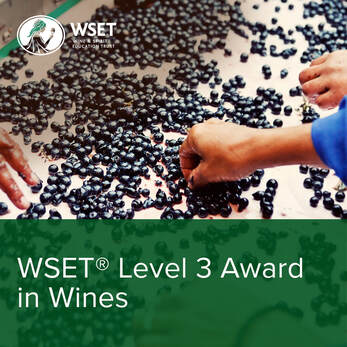 Monday April 6th is the last day to register for the April 13th start date for Level 3 Wine Award. Those wishing to participate in this hybrid class should click here for full details and to register for the class. The April 13 start date runs through June 14, and as of now will have an expected exam date of August 1. The Level 3 Award in Wine is a comprehensive class that looks to devote about 90 hours of study time, and involves the review of wines from around the world. For a complete list of class dates and description of class details, please click the link to the CLASSES page. For any questions related to this or other offerings, please email [email protected]. |
ABOUT THE Author
Brian Mitchell runs The New England Wine Academy, and is responsible for the content of this blog. With 30 years of drinks industry experience, Brian has learned a few things, but everyday he is learning more. This blog helps to bring that knowledge to you. Archives
July 2024
Categories
All
|
Copyright 2018 > 2024 by New England Wine Academy, LLC
we advocate making responsible decisions
we advocate making responsible decisions

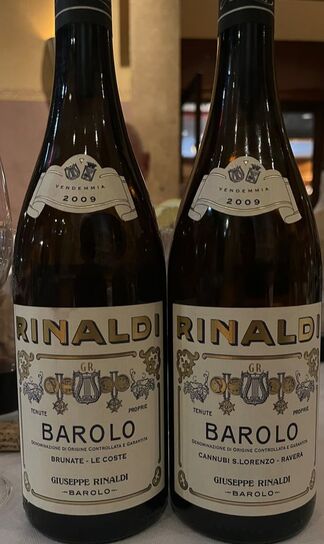
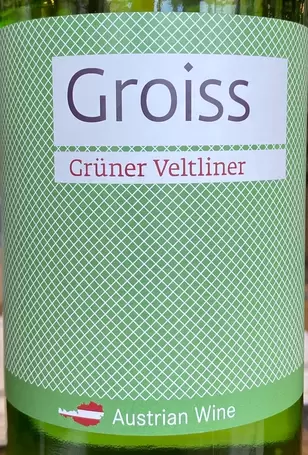
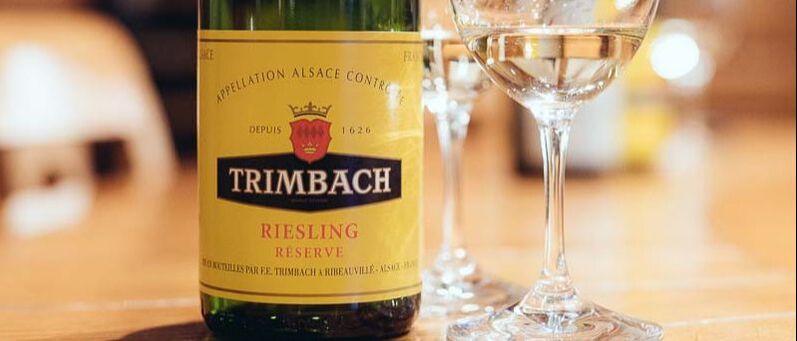
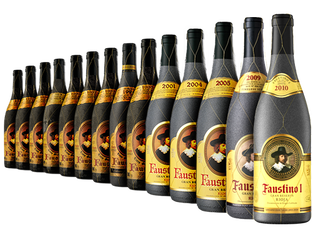
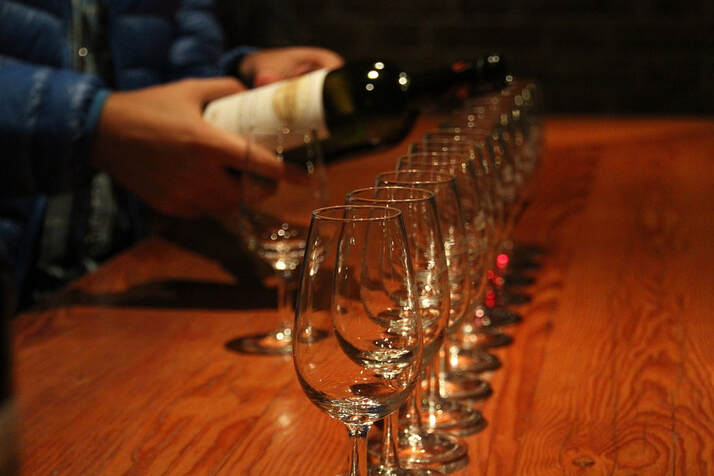
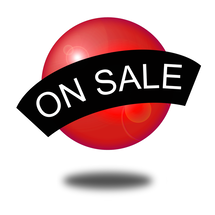
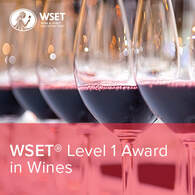
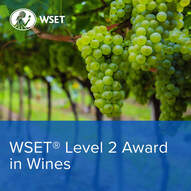
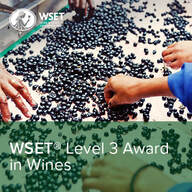
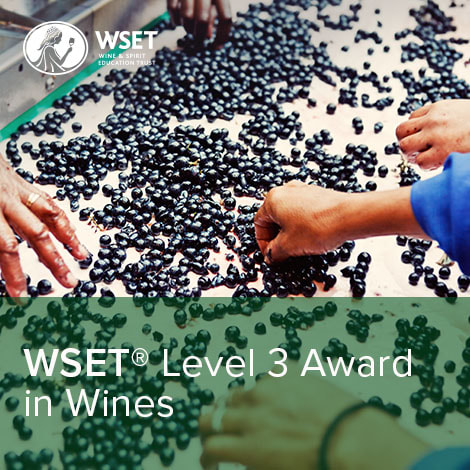
 RSS Feed
RSS Feed
